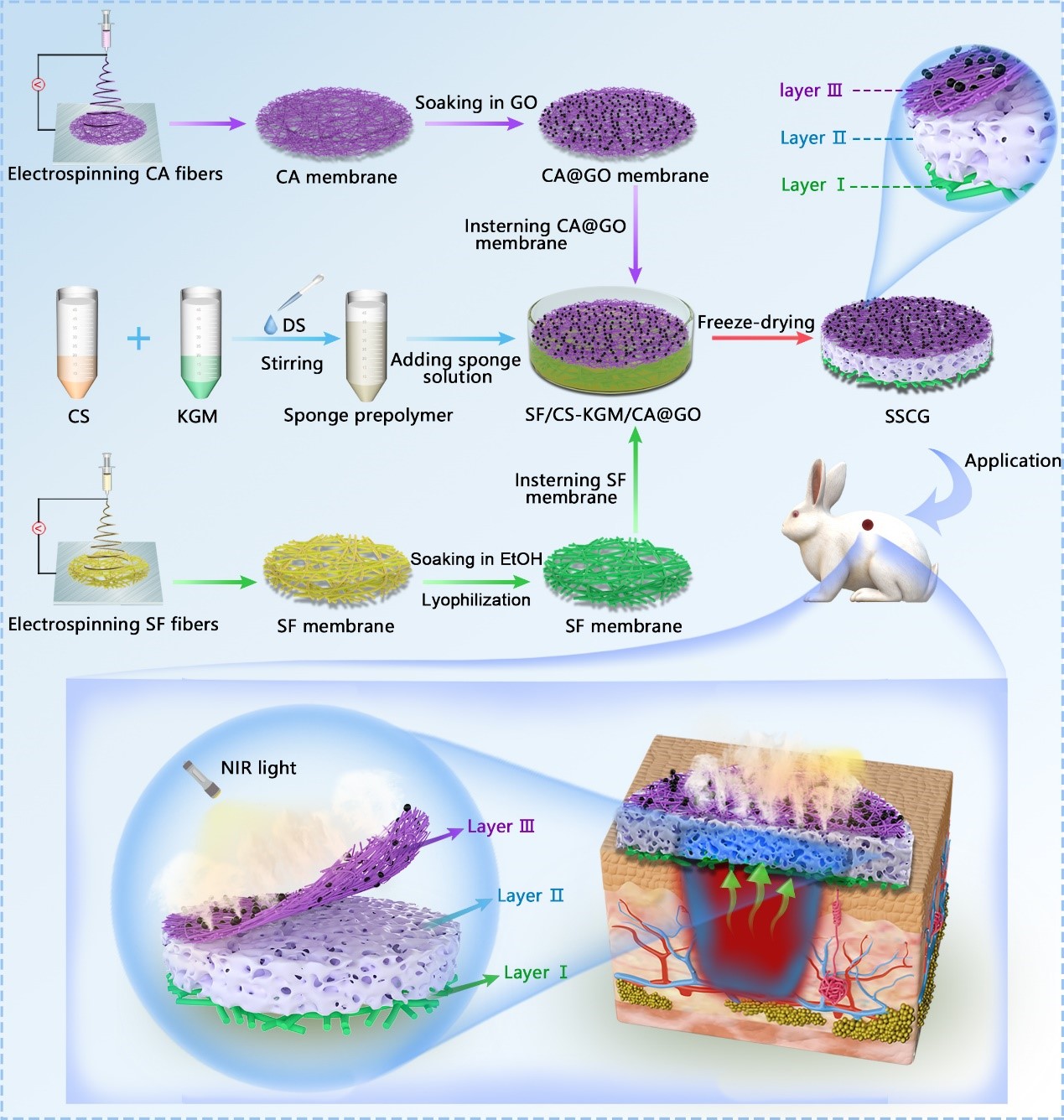A sandwich-like silk fibroin/polysaccharide composite dressing with continual biofluid draining for wound exudate management. International Journal of Biological Macromolecules 2023, 263(part 4), 127000.
Published in International Journal of Biological Macromolecules, 2023

Optimal wound healing requires a wet microenvironment without over-hydration. Inspired by capillarity and transpiration, we have developed a sandwich-like fibers/sponge dressing with continuous exudate drainage to maintain appropriate wound moisture. This dressing is prepared by integrating a three-layer structure using the freeze-drying method. Layer I, as the side that contacts with the skin directly, consists of a hydrophobic silk fibroin membrane; Layer II, providing the pumping action, is made of superabsorbent chitosan-konjac glucomannan sponge; Layer III, accelerating evaporation sixfold compared to natural evaporation, is constructed with a graphene oxide soaked hydrophilic cellulose acetate membrane. Animal experiments showed that the composite dressing had superior wound-healing characteristics, with wounds decreasing to 24.8% of their original size compared to 28.5% for the commercial dressing and 43.2% for the control. The enhanced wound healing can be ascribed to the hierarchical porous structure serves as the fluid-driving factor in this effort; the hydrophilicity of a membrane composed of silk fibroin nanofibers is adjustable to regulate fluid-transporting capacity; and the photothermal effect of graphene oxide guarantees exudates that have migrated to the top layer to evaporate continuously. These findings indicate the unidirectional wicking dressing has the potential to become the next generation of clinical dressings.
